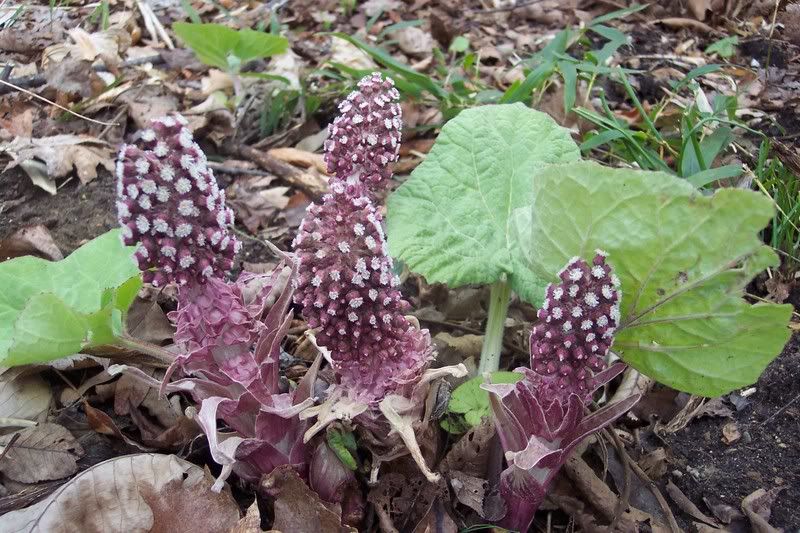How about a little fun? I already know what this plant is because I planted it a few years ago. Do you know what it is? I took this photo today just before it started snowing:

Just leave your guess or answer in the comment section if you think you know what it is. ![]()
Bob
Hey, Bob!
Can you help me out? While I was hiking earlier in the week, I picked a bunch of stuff that I thought was wild leek. I’ve got a picture of it on my blog. It tastes like onions/leek. It was in a semi-open area near a fenceline in what used to be a farm field.
After looking on the internet, I’m not so sure what it is. It sure tastes good:)
Anyway, if you could take a look, I’d appreciate it.
Here’s the link:
http://www.blogsmonroe.com/expatriate/index.php?paged=2
Thanks in advance!
Mike
Comment by Mike Ingels — April 5, 2007 @ 1:47 pm
Hi Mike, Judy and I both took a look at your post. I thought it might be wild garlic, here’s what Judy has to say:
Hi Mike, I looked up your plant in Newcomb’s Wildflower Guide ( the only one I have at home at the moment). the plants that you have in your hand look like wild garlic or wild onion. The smell of course is the clincher. Newcomb’s says the leaves of garlic and onion are very narrow. Wild leeks, on the other hand , have leaves that are elliptical, 8-10″ long, and look flat and wide in the illustration. wild garlic is found in moist meadows and open woods. Wild onion is found in rocky and gravelly places. Hope that helps. Judy
Comment by Bob — April 5, 2007 @ 4:36 pm
Thank you!
Comment by Mike Ingels — April 5, 2007 @ 6:41 pm
Oh, BTW, it must be an onion:)
Comment by Mike Ingels — April 5, 2007 @ 6:42 pm
an onion? the leaves look more like some kind of squash or it looks like the leaves of the wild rhubarb that keeps showing up in the middle of my yard (i don’t know how this happens). i would love to know what that is. it’s pretty, whatever it is!
Comment by vanessa — April 11, 2007 @ 6:50 pm
This was kind of tricky. I’m not sure if anyone could guess this one if they had not planted it in their garden or lived in the northwest part of the USA.
This is the flower stalk of Gunnera japonica, sometimes known as “Dinosaur Food”. The flowers emerge early in the season, as you can see. As the plant grows, it gets huge leaves. We grow it for the spectacular foliage. It is native to the forests of the Pacific Northwest.
Today I saw a Carpenter Bee foraging on the flowers looking for nectar or pollen.
Comment by Bob — April 13, 2007 @ 3:32 pm